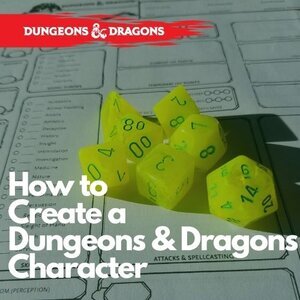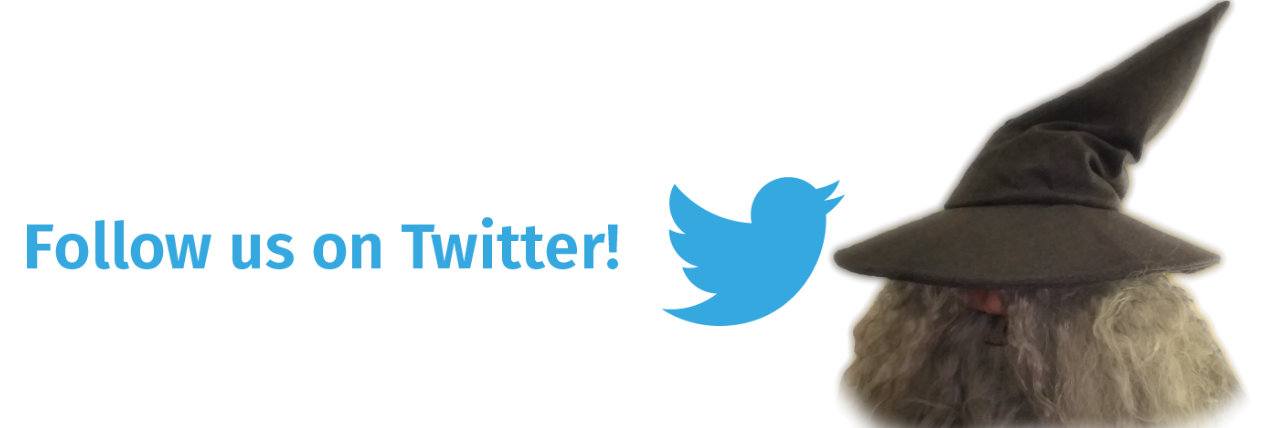What are Dungeon & Dragons Dice?
/For someone that may just be getting started with Dungeons & Dragons, one of the most tangible and used items for playing the game is a set of Dungeons & Dragons dice. Dungeons & Dragons dice sets are called a “polyhedral dice set”.
These dice go beyond just the standard six sided die. So what are these dice and how are they used?
Before we dive further into what Dungeons & Dragons dice actually are, be sure to also check out our guide on how to start playing Dungeons & Dragons!
The 7 Dice That Make up a Dungeons & Dragons Dice Set
A standard set of Dungeons & Dragons dice consists 7 dice. of a 4 sided die, the standard 6 sided die, an 8 sided die, a 10 sided die, a 12 sided die, a 20 sided die and a percentile die. These dice are essential for Dungeons & Dragons as well as other table top role playing (TTRPG) games that use a dice system.
Like regular six sided dice that you would find in any game of dice, the visible topside face is the number rolled. Don’t anyone come up with a game now where the bottom face is the actual role. That is silly and pointless.
The 20 Sided Die
The most common die that is used a game of Dungeons & Dragons is the 20 sided die. The 20 sided die is also know as the icosahedron. In Dungeons & Dragons, the 20 sided die is used to determine the success of events, such as hinting for traps, knowing about some sort of history, or rolling to hit a creature in battle.
The 12 Sided Die
The 12 sided die also goes by the name dodecahedron. I find that this specific die does not get much use in my games of Dungeons & Dragons. it’s used for more powerful abilities, abilities I generally lack at an early level. But none the less, it does get used for attacking with spells and abilities in increasing frequency at rising levels.
The 10 Sided Die and the Percent Die
The percentile die works by combining a role with the percentile die with the 10 sided die together that add up to 100%. The percentile die is not much different from a regular 10 sided die apart from the use of double digits on the percentile die. The 10 sided die also goes by the name pentagonal trapezohedron. But I have yet to find someone that actually calls it that.
For fun next time at your Dungeons & Dragons or pathfinder session, claim you will role your “pentagonal trapezohedron.” I am sure everyone will get a kick out of it.
The 8 Sided Die
The 8 sided die, also known as the Octahedron. If there is a die that is my personal favorite which is as odd as it sounds, this would be the one. This is a medium level die that is generally used for spells and attacks for medium level weapons and spells.
The Standard 6 Sided Die
We all know it, this die, is the most basic of the dice in the entire set. The six sided die is also known as a cube. For anyone who did not know that, don’t worry I won’t tell anyone. This die like the twelve sided die is used for things such as damage and spells in Dungeons & Dragons and Pathfinder. This die can come numbered but also is produced with little pip dots on each face.
Also a larger set of these dice and you can play Yahtzee, Farkle, and even Liar’s Dice!
The 4 Sided Die
Watch your step, these pyramids hurt when as the pointy end is always up! The 4 sided die is a tetrahedron. this die is generally used in Dungeons & Dragons and Pathfinder for those lower end attacks. Sometimes a player can role multiples of them! They are generally also used for Spells and attacks, but I have seen them act as skill challenge counters by the dungeon master that only allows 4 failures before the challenge is lost.
Understanding How to Role Dice in Dungeons & Dragons
This may seem straight forward to some, but in a game of Dungeons & Dragons a player might be asked to role for a spell that takes 2D8 or 3D6 or 2D4+2. What does that mean?
Well the first number stands for the amount of the die that needs to be rolled so a 2D8 means you roll 2 dice. The last number in that chain is the actual dice that should be rolled. In this example, that is the 8 sided die.
The plus at the end of a die role definition is a number that is added onto whatever was rolled. If I rolled 2D6+2 and the die roll equaled 5, then I would add 2 to the result of the role.
Now You Know About Dungeons & Dragons Dice
So go and tell all about your knowledge of these dice. Their real names and their use. Every Dungeons & Dragons player, or Pathfinder player loves their sets of dice. It can become an addiction getting more and more sets in varying colors, solid, translucent, swirl, metal, wood, you name it they are made! There are even these dice that are produced in all different shapes and sizes such as barrel dice! weird!
But in generally if you are looking for your very first set of dice, you just need these seven dice to start playing Dungeons & Dragons a 20 sided die, 12 sided die, 10 sided Die, Percentile Die, 8 sided Die, 6 Sided die, and 4 sided die.
If you found this article helpful be sure to check out some of our other guides for getting started with Dungeons & Dragons like our How to Create a Dungeons & Dragons Character, or our 10 Tips for new Dungeon Masters!
We release new articles on role playing games like Dungeons & Dragons and Pathfinder all the time so be sure to check back here for some more TTRPG content, lists, and guides!




















